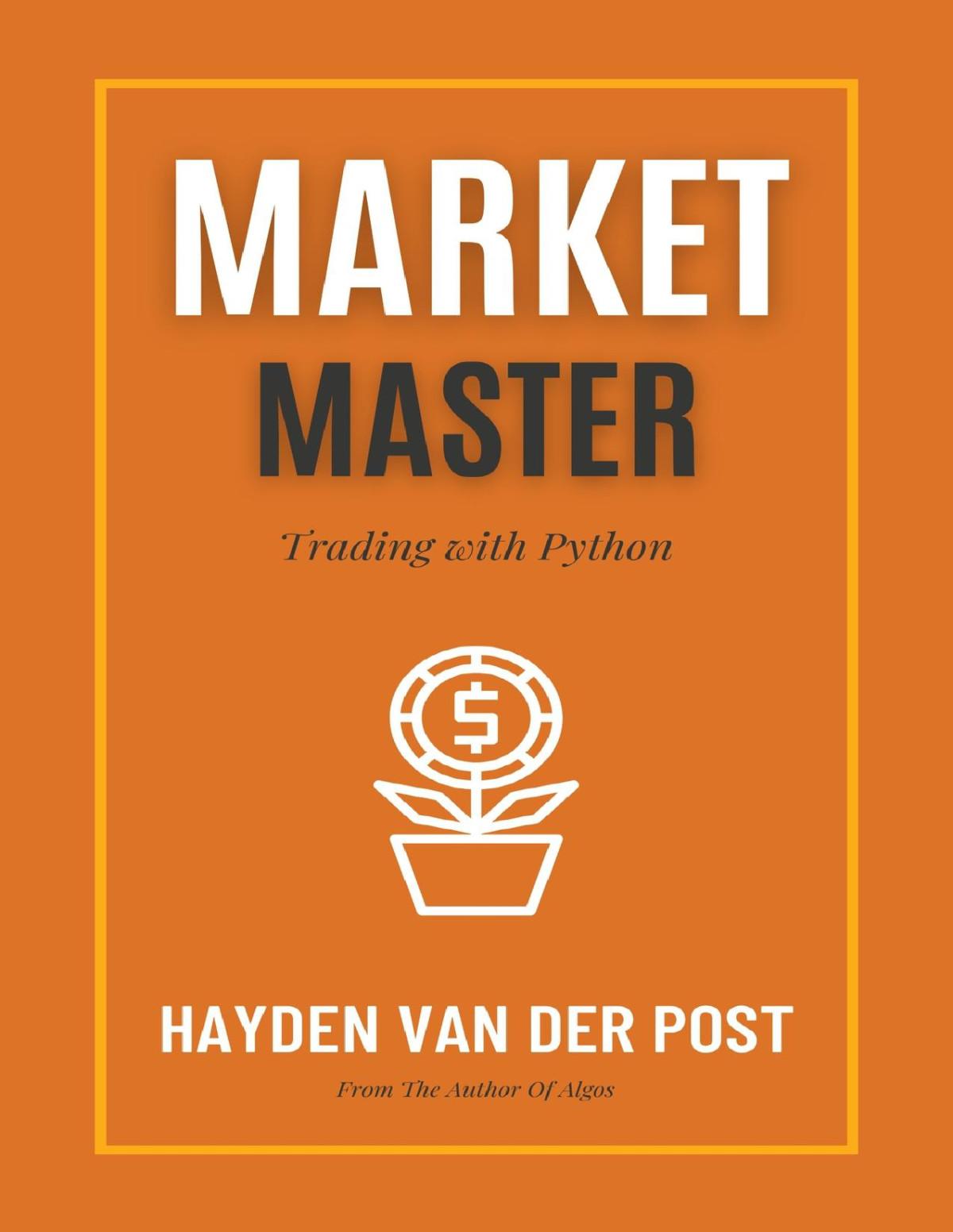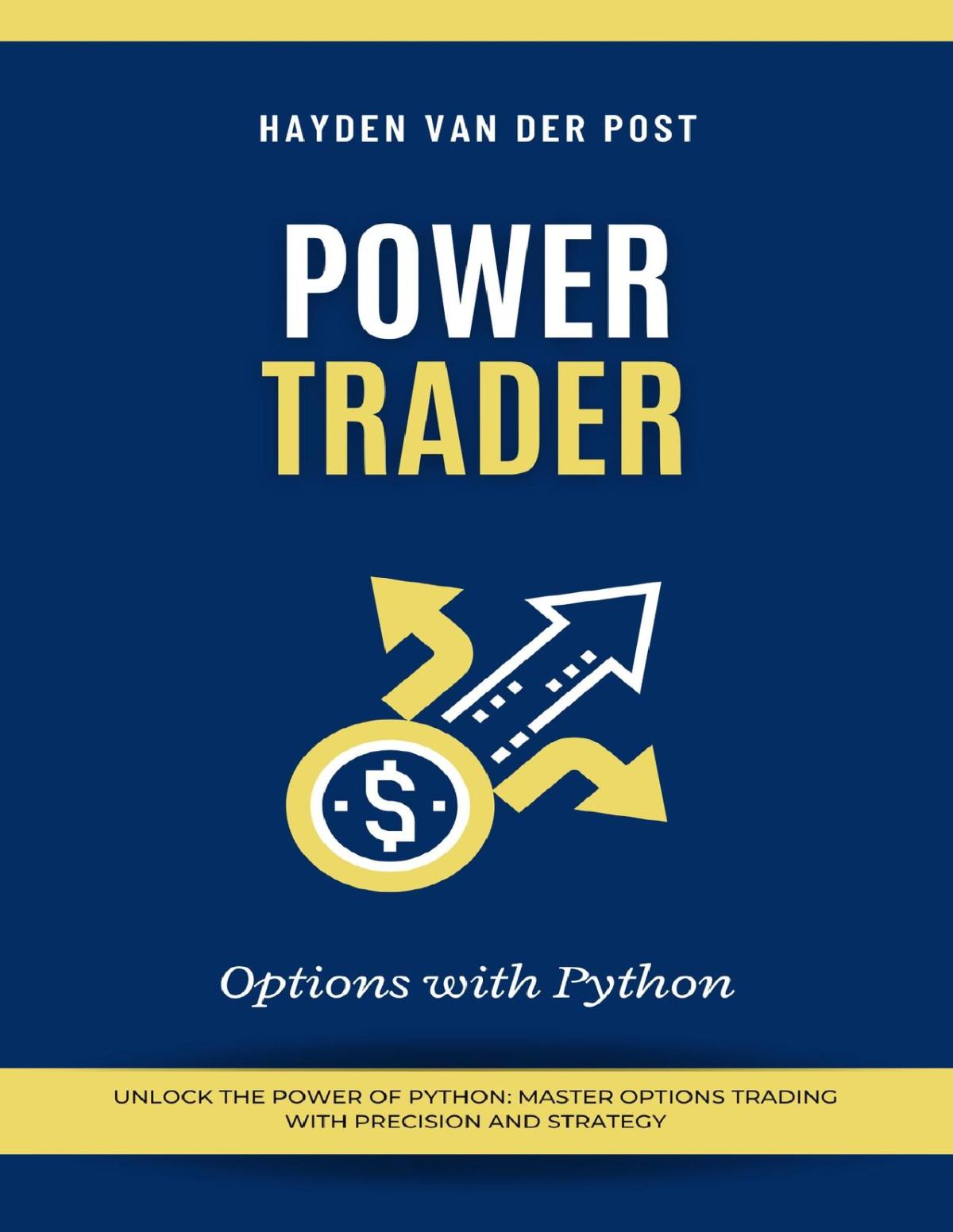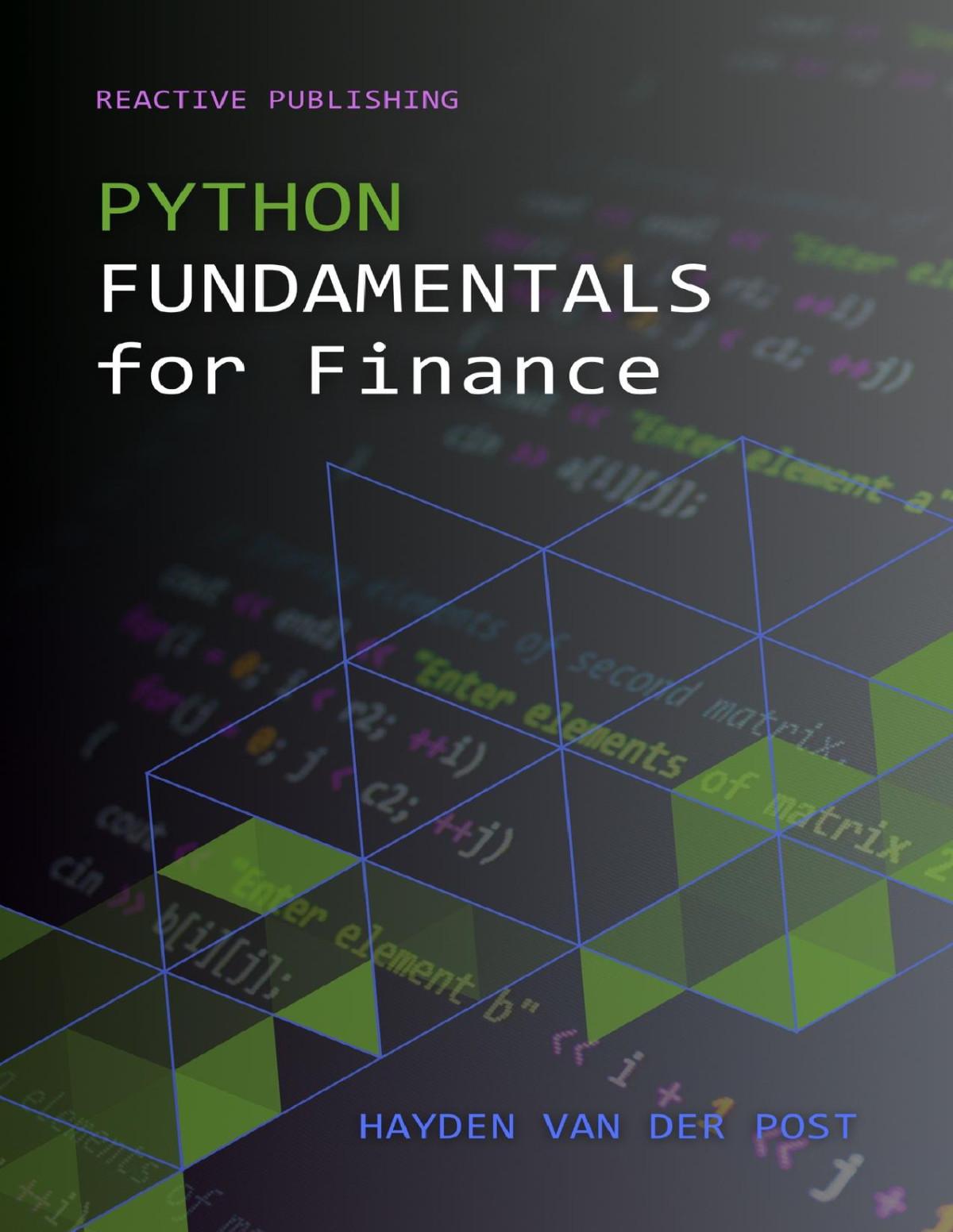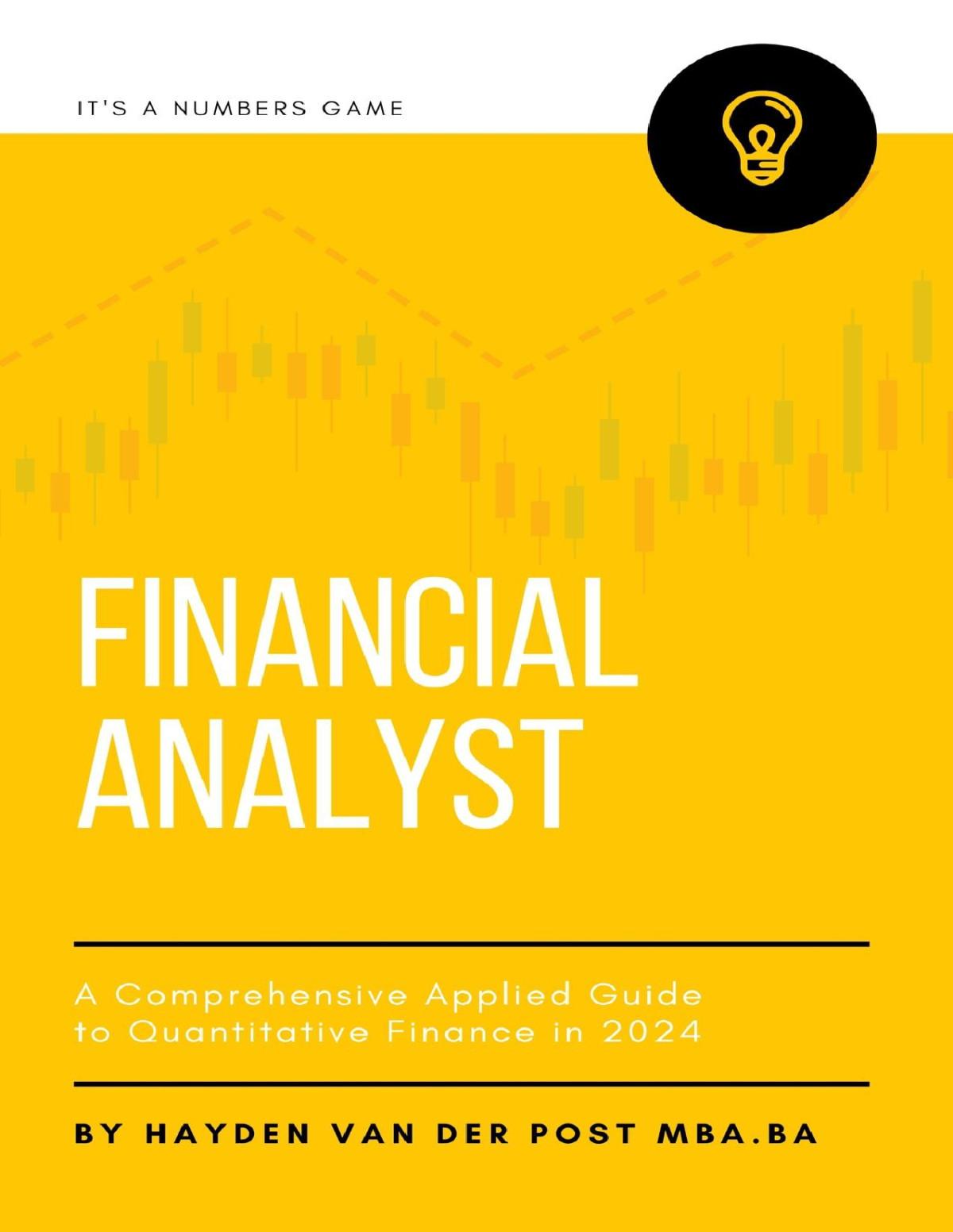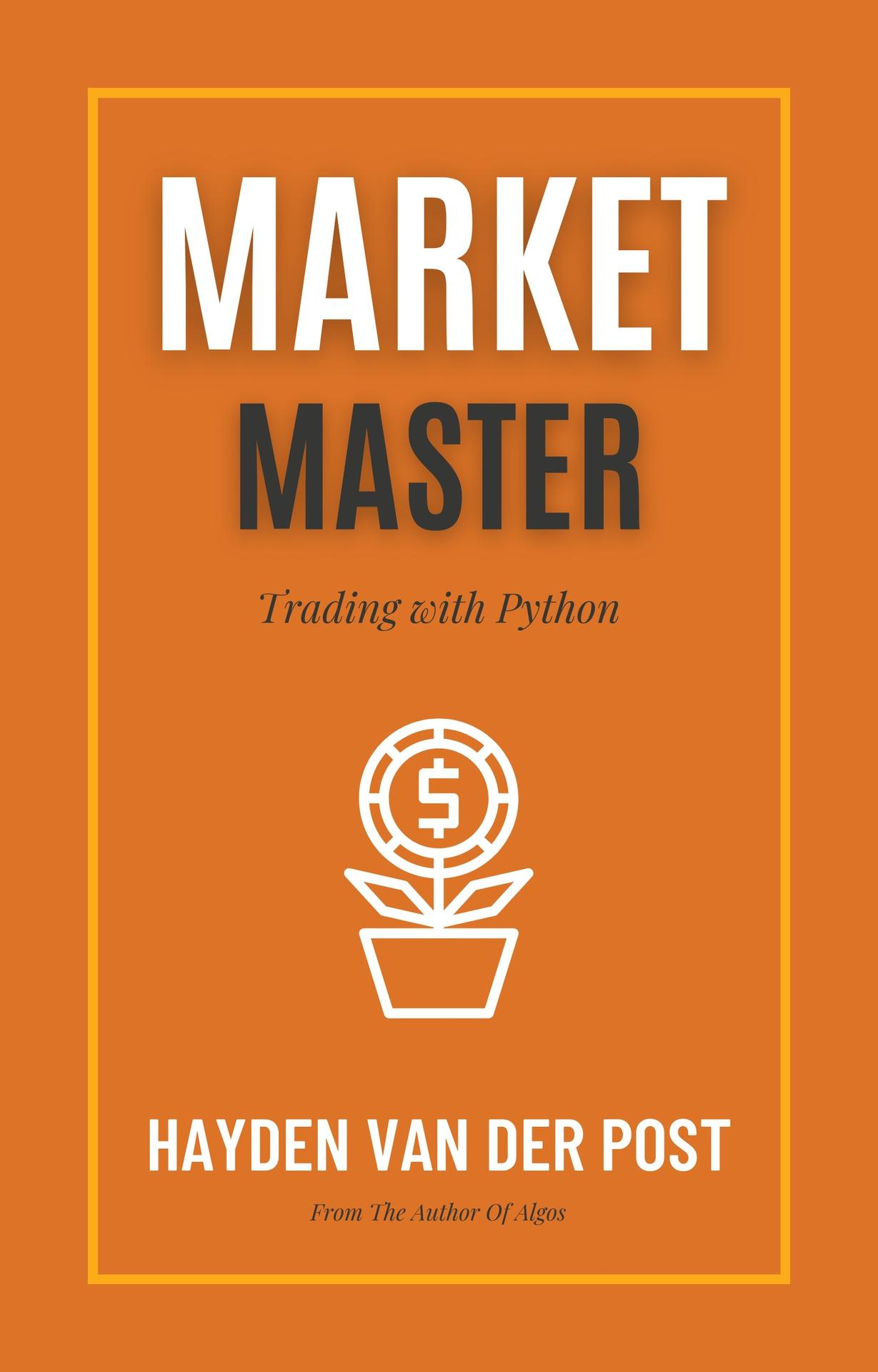CHAPTER 1: A PRESENTATION ON TRADING MECHANICS
In the extensive array of financial markets, options trading is an art form that offers a wide range of opportunities for both experienced traders and beginners. At its essence, options trading involves buying or selling the right to purchase or sell an asset at a predetermined price within a specific timeframe. This intricate financial instrument comes in two main forms: call options and put options. A call option grants the owner the ability to buy an asset at a set price before the option expires, while a put option gives the owner the right to sell the asset at the strike price. The allure of options lies in their flexibility, as they can be used for conservative or speculative purposes based on one's appetite for risk. Investors can use options to safeguard their portfolio against market declines, while traders can leverage them to take advantage of market predictions. Options also serve as a powerful tool for generating income through strategies like writing covered calls or creating complex spreads that benefit from an asset's volatility or time decay.
The pricing of options involves various factors, such as the current price of the underlying asset, the strike price, the time until expiration, volatility, and the risk-free interest rate. The interaction of these elements determines the
option's premium, which is the price paid to acquire the option. To navigate the options market successfully, traders must familiarize themselves with its distinctive terminology and metrics. Terms like "in the money," "out of the money," and "at the money" express the relationship between the asset's price and the strike price. Meanwhile, "open interest" and "volume" indicate the level of trading activity and liquidity in the market. Additionally, the risk and return profile of options is asymmetrical. Buyers can only lose the premium paid, but their profit potential can be substantial, especially for call options if the underlying asset's price rises significantly.
However, sellers of options face greater risk, as they receive the premium upfront but can suffer substantial losses if the market goes against them. Understanding the multitude of factors influencing options trading is akin to mastering a complex strategic game. It requires a combination of theoretical knowledge, practical skills, and an analytical mindset. As we delve deeper into the mechanics of options trading, we will examine these components closely, providing a solid foundation for the strategies and analyses to come. In the following sections, we will delve into the complexities of call and put options, shed light on the vital significance of options pricing, and introduce the renowned Black Scholes Model—a mathematical guide that helps traders navigate through market uncertainties. Our journey will be based on empirical evidence, rooted in the powerful libraries of Python, and enriched with examples that bring the concepts to life. At each step, readers will not only gain knowledge but also acquire practical tools to apply these theories in real-world trading.
Understanding Call and Put Options: The Foundations of Options Trading
As we embark on the exploration of call and put options, we find ourselves at the core of options trading. These two fundamental instruments serve as the building blocks upon which options strategies are constructed. A call option can be compared to holding a key to a treasure chest, with a predetermined time to decide whether to unlock it. If the treasure (the underlying asset) increases in value, the holder of the key (the call option) stands to profit by exercising the right to buy at a previously agreed price, selling it at the higher current price, and enjoying the resulting gain. However, if the expected appreciation fails to materialize before the option expires, the key becomes worthless, and the holder's loss is limited to the amount paid for the option, known as the premium. ```python
# Calculating Call Option Profit return max(stock_price - strike_price, 0) - premium
# Example values
stock_price = 110 # Current stock price
strike_price = 100 # Strike price of the call option premium = 5 # Premium paid for the call option
# Calculate profit profit = call_option_profit(stock_price, strike_price, premium)
print(f"The profit from the call option is: ${profit}")
Contrastingly, a put option is similar to an insurance policy. It grants the policyholder the freedom to sell the underlying asset at the strike price, protecting against a decline in the asset's value.
If the market price drops below the strike price, the put option gains value, enabling the holder to sell the asset at a price higher than the prevailing market rate. However, if the asset maintains or increases its value, the put option, akin to an unnecessary insurance policy, expires—resulting in a loss equal to the premium paid for this protection. ```python
# Calculating Put Option Profit return max(strike_price - stock_price, 0) - premium
# Example values
stock_price = 90 # Current stock price
strike_price = 100 # Strike price of the put option premium = 5 # Premium paid for the put option
# Calculate profit
profit = put_option_profit(stock_price, strike_price, premium)
print(f"The profit from the put option is: ${profit}")
The intrinsic value of a call option is determined by the extent to which the stock price exceeds the strike price. Conversely, the intrinsic value of a put option is determined by how much the strike price surpasses the stock price. In both cases, if the option is "in the money," it holds intrinsic value. If not, its value is purely extrinsic, representing the probability that it may become profitable before it expires. The premium itself is not a random number but is carefully calculated using models that consider the asset's current price, the option's strike price, the time remaining until expiration, the asset's expected volatility, and the prevailing risk-free interest rate.
These calculations can be easily implemented in Python, offering a hands-on approach to comprehend the dynamics of option pricing. As we progress, we will break down these pricing models and learn how the Greeks—dynamic measures of an option's sensitivity to various market factors —can guide our trading choices. Through these concepts, traders can develop strategies that range from simple to extremely intricate, always keeping risk management and profit-seeking in mind. Delving deeper into options trading, we will explore the strategic applications of these instruments and the ways in which they can be used to achieve various investment objectives. With Python as our analytical ally, we will unravel the enigmas of options and illuminate the path to becoming skilled traders in this captivating domain.
Revealing the Significance of Options Pricing
Options pricing is not simply a numerical exercise; it is the foundation upon which the realm of options trading is built. It imparts the wisdom necessary to navigate the unpredictable waters of market fluctuations, safeguarding traders from uncertain circumstances.
In the world of options, the price acts as a guide, directing traders towards knowledgeable decisions. It embodies a multitude of factors, each revealing insights about the future of the underlying asset. The price of an option reflects the collective sentiment and expectations of the market, distilled into a single value through sophisticated mathematical models. ```python
# Black-Scholes Model for Option Pricing import math from scipy.stats import norm
# S: current stock price
# K: strike price of the option
# T: time to expiration in years
# r: risk-free interest rate
# sigma: volatility of the stock
d1 = (math.log(S / K) + (r + 0.5 * sigma**2) * T) / (sigma * math.
sqrt(T))
d2 = d1 - sigma * math.sqrt(T)
call_price = S * norm.cdf(d1) - K * math.exp(-r * T) * norm.cdf(d2)
return call_price
# Example values
current_stock_price = 100 strike_price = 100 time_to_expiration = 1 # 1 year
risk_free_rate = 0.05 # 5% volatility = 0.2 # 20%
# Calculate call option price call_option_price = black_scholes_call(current_stock_price, strike_price, time_to_expiration, risk_free_rate, volatility) print(f"The call option price is: ${call_option_price:.
2f}")
Understanding this price enables traders to determine the fair value of an option. It equips them with the knowledge to identify overvalued or undervalued options, which could indicate potential opportunities or risks. Grasping the intricacies of options pricing is akin to mastering the art of valuation itself, a critical skill in all areas of finance. Furthermore, options pricing is a dynamic process, susceptible to the changing landscape of market conditions. The remaining time until expiration, the volatility of the underlying asset, and prevailing interest rates are among the factors that breathe life into the price of an option. These variables are in a constant state of flux, causing the price to fluctuate like the tide responding to the lunar cycle. The pricing models, akin to the writings of ancient sages, are complex and require deep comprehension to be applied correctly.
They are not without fault, but they provide a foundation from which traders can make informed assumptions about the value of an option. Python serves as a powerful tool in this endeavor, simplifying the intricate algorithms into executable code that can swiftly adapt to market changes. The significance of options pricing extends beyond individual traders. It is a vital component of market efficiency, contributing to the establishment of liquidity and the smooth operation of the options market. It facilitates the creation of hedging strategies, where options are used to manage risk, and informs speculative ventures where traders seek to capitalize on volatility. Let us, therefore, continue on this journey with the understanding that comprehending options pricing is not merely about learning a formula; it is about unlocking a crucial skill that will act as a guide in the vast realm of options trading. Demystifying the Black Scholes Model: The Essence of Options Pricing
At the core of contemporary financial theory lies the Black Scholes Model, a refined framework that has transformed the approach to valuing options.
Created by economists Fischer Black, Myron Scholes, and Robert Merton in the early 1970s, this model offers a theoretical estimation of the price of European-style options. The Black Scholes Model is based on the assumption of a liquid market where the option and its underlying asset can be continuously traded. It assumes that the prices of the underlying asset follow a geometric Brownian motion, characterized by constant volatility and a normal distribution of returns. This stochastic process forms the basis of the model's probabilistic approach to pricing.
```python import numpy as np from scipy.stats import norm
# S: current stock price
# K: strike price of the option
# T: time to expiration in years
# r: risk-free interest rate
# sigma: volatility of the underlying asset
# Calculate d1 and d2 parameters
d1 = (np.log(S / K) + (r + 0.
5 * sigma**2) * T) / (sigma * np.sqrt(T))
d2 = d1 - sigma * np.sqrt(T)
# Calculate the price of the European call option
call_price = (S * norm.cdf(d1)) - (K * np.exp(-r * T) * norm.cdf(d2))
return call_price
# Example values for a European call option current_stock_price = 50
strike_price = 55 time_to_expiration = 0.5 # 6 months
risk_free_rate = 0.
01 # 1%
volatility = 0.25 # 25%
# Calculate the European call option price european_call_price = black_scholes_european_call(current_stock_price, strike_price, time_to_expiration, risk_free_rate, volatility)
print(f"The European call option price is: ${european_call_price:.2f}")
The Black Scholes equation utilizes a risk-neutral valuation method, which implies that the expected return of the underlying asset is not a direct factor in the pricing formula. Instead, the risk-free rate becomes the crucial variable, suggesting that the expected return on the asset should align with the risk-free rate when adjusted for risk through hedging. Within the essence of the Black Scholes Model, we discover the 'Greeks,' which are sensitivities related to derivatives of the model. These consist of Delta, Gamma, Theta, Vega, and Rho. Each Greek elucidates how different
financial variables impact the option's price, providing traders with profound insights into risk management.
The Black Scholes formula is elegantly straightforward, yet its implications are profound. It has facilitated the development of the options market by establishing a common language for market participants. The model has become a cornerstone of financial education, an indispensable tool in the trader's arsenal, and a benchmark for new pricing models that relax some of its restrictive assumptions. The significance of the Black Scholes Model cannot be overstated. It serves as the catalyst that transforms the raw data of the market into valuable knowledge. As we embark on this journey of exploration, let us embrace the Black Scholes Model as more than a mere equation—it is a testament to human ingenuity and a guiding light in the intricate realm of financial markets.
Harnessing the Potential of the Greeks: Navigating the Waters of Options Trading
In the voyage of options trading, comprehending the Greeks is comparable to a captain mastering the winds and currents.
These mathematical indicators are named after the Greek letters Delta, Gamma, Theta, Vega, and Rho, and each plays a pivotal role in navigating the volatile waters of the markets. They offer traders profound insights into how various factors influence the prices of options and, consequently, their trading strategies. Delta (\(\Delta\)) acts as the helm of the options ship, indicating the expected movement in the price of an option for every one-point change in the underlying asset's price. A Delta approaching 1 indicates a strong correlation between the option's price
and the stock's movements, while a Delta close to 0 suggests little sensitivity to the stock's fluctuations. In addition to guiding traders in hedging, Delta is also useful in assessing the likelihood of an option ending up in-themoney.
To calculate Delta for a European Call Option using the Black-Scholes Model, we can use the following formula:
d1 = (log(S / K) + (r + sigma**2 / 2) * T) / (sigma * sqrt(T))
delta = norm.cdf(d1)
return delta
Applying the calculate_delta function with the parameters from the previous example will give us the Delta of the European call option, which is: {call_option_delta:.
2f}
Gamma (\(\Gamma\)) provides insight into the curvature of an option's price trajectory by charting the rate of change in Delta. A high Gamma indicates that Delta is highly sensitive to changes in the underlying asset's price, implying that the option's price may change rapidly. This information is valuable for traders who need to adjust their positions to maintain a delta-neutral portfolio.
Vega (\(\nu\)) measures the impact of volatility on an option's price. Even a slight change in volatility can lead to significant fluctuations in the option's price. Vega helps traders understand the risk and potential reward associated with volatile market conditions by indicating the option's sensitivity to shifts in the underlying asset's volatility.
Theta (\(\Theta\)) represents the rate at which an option's value erodes as the expiration date approaches.
Theta reminds traders that options are wasting assets, and their value decreases over time. It is crucial for traders to stay vigilant as Theta erosion can diminish potential profits.
Rho (\(\rho\)) measures the sensitivity of an option's price to changes in the risk-free interest rate. While usually less influential than the other Greeks, Rho becomes more significant during periods of fluctuating interest rates, especially for long-term options.
These Greeks, both individually and collectively, serve as a sophisticated navigational system for traders. They offer a dynamic framework to manage positions, hedge risks, and exploit market inefficiencies. Incorporating these measures into trading decisions provides a quantitative edge, empowering those who can skillfully interpret and act on the information the Greeks provide.
As we explore the role of the Greeks in trading, we will uncover their interactions with one another and the market as a whole. This will shed light on complex risk profiles and enable the development of robust trading strategies.
Understanding the Greeks is not simply a matter of mastering equations and calculations; it is about cultivating an intuition for the ebb and flow of options trading. It involves learning to communicate fluently and confidently in the language of the markets. Let us continue our journey armed with the knowledge of the Greeks, prepared to embrace the challenges and opportunities presented by the options market.
Building a solid foundation: Fundamental Trading Strategies Using Options
When entering the world of options trading, it is crucial to have a collection of strategies, each with its own advantages and situational benefits. Foundational trading strategies using options are the fundamental building blocks upon which more intricate tactics are built. These strategies act as the bedrock for safeguarding one's investment portfolio and speculating on future market movements. In this section, we will delve into a selection of essential options strategies, clarifying their mechanics and appropriate usage. The Long Call, a straightforward and optimistic strategy, involves buying a call option with the expectation that the underlying asset will appreciate significantly before the option expires. This strategy provides limitless potential for profit with limited risk—the most one can lose is the premium paid for the option. ```python
# Calculation of Payoff for Long Call Option return max(0, S - K) - premium
# Example: Calculating the payoff for a Long Call with a strike price of $50 and a premium of $5 stock_prices = np.arange(30, 70, 1) payoffs = np.
array([long_call_payoff(S, 50, 5) for S in stock_prices])
plt.plot(stock_prices, payoffs)
plt.title('Payoff of Long Call Option')
plt.xlabel('Stock Price at Expiration')
plt.ylabel('Profit / Loss')
plt.grid(True)
plt.show()
The Long Put is the mirror image of the Long Call and is suitable for those anticipating a decline in the price of the underlying asset.
By buying a put option, one gains the right to sell the asset at a predetermined strike price, potentially profiting from a market downturn. The maximum loss is limited to the premium paid, while the potential profit can be substantial but restricted to the strike price minus the premium and the underlying asset's value falling to zero. Covered Calls provide a method to generate income from an existing stock position. By selling call options against already owned stock, one can collect the option premiums. If the stock price remains below the strike price, the options expire worthless, enabling the seller to retain the premium as profit. If the stock price exceeds the strike price, the stock may be called away, but this strategy is often utilized when a significant rise in the underlying stock's price is not expected.
# Calculation of Payoff for Covered Call
return S - stock_purchase_price + premium
return K - stock_purchase_price + premium
# Example: Calculating the payoff for a Covered Call
stock_purchase_price = 45
call_strike_price = 50
call_premium = 3
stock_prices = np.
arange(30, 70, 1)
payoffs = np.array([covered_call_payoff(S, call_strike_price, call_premium, stock_purchase_price) for S in stock_prices])
plt.plot(stock_prices, payoffs)
plt.title('Payoff of Covered Call Option')
plt.xlabel('Stock Price at Expiration')
plt.ylabel('Profit / Loss')
plt.grid(True)
plt. show() ```
Protective Puts are used to protect a stock position against a decline in value. By owning the underlying stock and simultaneously purchasing a put option, one can set a bottom limit on potential losses without capping the potential gains. This strategy functions as an insurance policy, ensuring that even in the worst-case scenario, losses cannot exceed a certain level. These foundational strategies are merely the tip of the iceberg in options trading. Each strategy serves as a tool, effective when used wisely and in the appropriate market context. By understanding the mechanics of these strategies and their intended purposes, traders can approach the options market with increased confidence. Furthermore, these strategies act as the cornerstones for more sophisticated tactics that traders will encounter as they progress in their journey.
As we advance, we will delve deeper into these strategies, utilizing the Greeks to enhance decision-making and
exploring how each can be adjusted to align with one's risk tolerance and market outlook.
Comprehending Risk and Reward in Options Trading
The appeal of options trading lies in its adaptability and the imbalance of risk and reward it can provide. However, the very characteristics that make options attractive also require a comprehensive understanding of risk. To master the art of options trading, one must become skilled at balancing the potential for profit against the likelihood of loss. The notion of risk in options trading is multifaceted, varying from the basic risk of losing the premium on an option to more intricate risks connected to specific trading strategies. To unravel these risks and potentially capitalize on them, traders utilize various measurements, commonly known as the Greeks. While the Greeks aid in managing the risks, there are inherent uncertainties that every options trader must confront.
```python
# Calculation of Risk-Reward Ratio return abs(max_loss / max_gain)
# Example: Calculation of Risk-Reward Ratio for a Long Call Option
call_premium = 5
max_loss = -call_premium # Maximum loss is the premium paid
max_gain = np.inf # Maximum gain is theoretically unlimited for a Long Call
rr_ratio = risk_reward_ratio(max_loss, max_gain)
print(f"The Risk-Reward Ratio for this Long Call Option is: {rr_ratio}")
One of the primary risks is the time decay of options, known as Theta. As each day goes by, the time value of an option diminishes, leading to a decrease in the option's price if all other factors remain constant. This decay accelerates as the option nears its expiration date, making time a crucial factor to consider, especially for options buyers. Volatility, or Vega, is another crucial risk element. It measures an option's price sensitivity to changes in the volatility of the underlying asset. High volatility can result in larger swings in option prices, which can be both advantageous and detrimental depending on the position taken. It's a dual-sided sword that requires careful thought and management.
# Calculation of Volatility Impact on Option Price
return current_price + (vega * volatility_change)
# Example: Calculation of the impact of an increase in volatility on an option price
current_option_price = 10
vega_of_option = 0.2
increase_in_volatility = 0.05 # 5% increase
new_option_price = volatility_impact_on_price(current_option_price, vega_of_option, increase_in_volatility)
print(f"The new option price after a 5% increase in volatility is: ${new_option_price}")
Liquidity risk is another factor to consider. Options contracts on less liquid underlying assets or those with wider bid-ask spreads can be more challenging to trade without affecting the price. This can lead to difficulties when entering or exiting positions, potentially resulting in suboptimal trade executions. On the other hand, the potential for returns in options trading is also substantial and can be realized in various market conditions.
Directional strategies, such as the Long Call or Long Put, allow traders to harness their market outlook with defined risk. Non-directional strategies, such as the iron condor, aim to profit from minimal price movement in the underlying asset. These strategies can generate returns even in a stagnant market, as long as the asset's price remains within a specific range. Beyond individual tactical risks, the consideration of portfolio-level factors also comes into play. Utilizing a variety of options strategies can help mitigate risk. For example, protective puts can safeguard an existing stock portfolio, while covered calls can enhance returns by generating income. The interplay between risk and return in options trading is a delicate balance.
The trader must act as both a choreographer and performer, carefully composing positions while remaining adaptable to market changes. This section has provided an insight into the dynamics of risk and return that are central to options trading. As we progress, we will explore advanced risk management techniques and methods to optimize returns, always maintaining a careful balance between the two.
The Historical Evolution of Options Markets
Tracing the lineage of options markets reveals a captivating tale that stretches back to ancient times. The origins of modern options trading can be found in the tulip mania of the 17th century, where options were utilized to secure the right to buy tulips at a later date. This speculative frenzy laid the foundation for the contemporary options markets we are familiar with today. However, the formalization of options trading occurred much later. It was not until 1973 that the Chicago Board Options Exchange (CBOE) was established, marking the first organized exchange to facilitate the trading of standardized options contracts. The arrival of the CBOE ushered in a new era for financial markets, creating an environment where traders could engage in options trading with greater transparency and oversight. The introduction of the Black-Scholes model coincided with the establishment of the CBOE, providing a theoretical framework for pricing options contracts that revolutionized the financial industry. This model offered a systematic approach to valuing options, taking into account variables such as the current price of the underlying asset, the strike price, time to expiration, volatility, and the riskfree interest rate.
```python
# Black-Scholes Formula for European Call Option from scipy.stats import norm
import math
# S: spot price of the underlying asset
# K: strike price of the option
# T: time to expiration in years
# r: risk-free interest rate
# sigma: volatility of the underlying asset
d1 = (math.log(S / K) + (r + 0.
5 * sigma ** 2) * T) / (sigma * math.sqrt(T))
d2 = d1 - sigma * math.sqrt(T)
call_price = S * norm.cdf(d1) - K * math.exp(-r * T) * norm.cdf(d2)
return call_price
# Example: Calculating the price of a European Call Option
S = 100 # Current price of the underlying asset
K = 100 # Strike price
T = 1 # Time to expiration (1 year)
r = 0.05 # Risk-free interest rate (5%) sigma = 0.
2 # Volatility (20%)
call_option_price = black_scholes_call(S, K, T, r, sigma) print(f"The Black-Scholes price of the European Call Option is: ${call_option_price:.2f}")
Following in the footsteps of the CBOE, other exchanges around the globe began to emerge, such as the Philadelphia Stock Exchange and the European Options Exchange, establishing a worldwide framework for options trading. These exchanges played a crucial role in fostering liquidity and diversity in the options market, which in turn spurred innovation and sophistication in trading strategies. The stock market crash of 1987 was a turning point for the options market. It highlighted the need for robust risk
management practices, as traders turned to options for hedging against market downturns. This event also emphasized the importance of understanding the intricacies of options and the variables that impact their prices. As technology progressed, electronic trading platforms emerged, allowing access to options markets to become more inclusive.
These platforms facilitated faster transactions, improved pricing, and expanded reach, enabling retail investors to join institutional traders in participating. Today, options markets are an essential part of the financial ecosystem, providing various tools for managing risk, generating income, and engaging in speculation. The markets have adapted to cater to a diverse group of participants, ranging from those looking to hedge their positions to those seeking arbitrage opportunities or speculative gains. The development of options markets throughout history showcases human innovation and the pursuit of financial advancements. As we navigate the ever-changing landscape of the financial world, we should remember the resilience and adaptability of the markets by drawing lessons from the past. Traders and programmers armed with the computational power of Python and the strategic foresight honed over centuries of trading are writing the next chapter in this story.
Entering the world of options trading without a solid grasp of its specialized vocabulary is like navigating a labyrinth without a map.
To trade effectively, one must be well-versed in the language of options. In this article, we will decode the essential terms that form the foundation of options
The Lexicon of Leverage: Terminology for Options Trading
discourse. **Option**: A financial derivative that grants the holder the right, but not the obligation, to buy (call option) or sell (put option) an underlying asset at a predetermined price (strike price) before or on a specified date (expiration date). **Call Option**: A contract that gives the buyer the right to purchase the underlying asset at the strike price within a specific timeframe. The buyer expects the asset's price to rise. **Put Option**: On the other hand, a put option grants the buyer the right to sell the asset at the strike price within a set period. This is typically used when the buyer anticipates a decline in the asset's price.
**Strike Price (Exercise Price)**: The pre-determined price at which the option buyer can execute the purchase (call) or sale (put) of the underlying asset. **Expiration Date**: The date on which the option contract expires. After this point, the option cannot be exercised and ceases to exist. **Premium**: The price paid by the buyer to the seller (writer) of the option. This fee is paid for the rights granted by the option, regardless of whether the option is exercised. Mastering this vocabulary is an essential step for any aspiring options trader. Each term encapsulates a specific concept that helps traders analyze opportunities and risks in the options market.
By combining these definitions with mathematical models used in pricing and risk assessment, traders can develop precise strategies, leveraging the powerful computational capabilities of Python to unravel the intricacies inherent in each term. In the following sections, we will continue to build on these fundamental terms, incorporating them into broader strategies and analyses that make options trading a potent and nuanced domain of the financial world.
The Regulatory Framework of Options Trading
In the realm of finance, regulation serves as the guardian, ensuring fair play and preserving market integrity. Options trading, with its complex strategies and potential for significant leverage, operates within a network of regulations that are essential to understand for compliance and successful participation in the markets. In the United States, the Securities and Exchange Commission (SEC) and the Commodity Futures Trading Commission (CFTC) hold the position of primary regulators for options market oversight. The SEC regulates options traded on stocks and index assets, while the CFTC oversees options dealing with commodities and futures. Other jurisdictions have their own regulatory bodies, such as the Financial Conduct Authority (FCA) in the United Kingdom, which enforce their own distinct sets of rules.
Options are primarily traded on regulated exchanges, such as the Chicago Board Options Exchange (CBOE) and the International Securities Exchange (ISE), which are also overseen by regulatory agencies. These exchanges provide a platform for standardizing options contracts, improving liquidity, and establishing transparent pricing mechanisms. The OCC acts as both the issuer and guarantor of option contracts, adding a layer of security by ensuring contractual obligations are met. The OCC's role is vital in maintaining trust in the options market, as it mitigates counterparty risk and allows for confident trading between buyers and sellers.
FINRA, a non-governmental organization, regulates brokerage firms and exchange markets, playing a crucial role in protecting investors and ensuring fairness in the U.S. capital markets.
Traders and firms must adhere to a strict set of rules that govern trading activities, including proper registrations,
reporting requirements, audits, and transparency. Key rules such as 'Know Your Customer' (KYC) and 'Anti-Money Laundering' (AML) are essential in preventing financial fraud and verifying client identities.
Options trading carries significant risk, and regulatory bodies require brokers and platforms to provide comprehensive risk disclosures to investors. These disclosures inform traders about potential losses and the complexity of options trading.
```python
# Example of a Regulatory Compliance Checklist for Options Trading
# Create a simple function to check compliance for options trading
def check_compliance(trading_firm): compliance_status = { }
if not trading_firm['provides_risk_disclosures_to_clients']:
print(f"Compliance issue: {requirement} is not met.") return False
print("All compliance requirements are met.") return True trading_firm = { 'provides_risk_disclosures_to_clients': True }
# Check if the trading firm meets all compliance requirements
compliance_check = check_compliance(trading_firm)
This code snippet demonstrates a hypothetical, simplified compliance checklist that could be part of an automated system.
It's important to acknowledge that regulatory compliance is complex and ever-changing, often requiring specialized legal expertise. Understanding the regulatory framework goes beyond simply following the laws; it involves recognizing the safeguards these regulations provide in preserving market integrity and protecting individual traders. As we delve deeper into the mechanics of options trading, it is crucial to keep these regulations in mind, as they guide the development and execution of trading strategies. Looking ahead, the interaction between regulatory frameworks and trading strategies will become more apparent as we explore how compliance is integrated into our trading methodologies.
